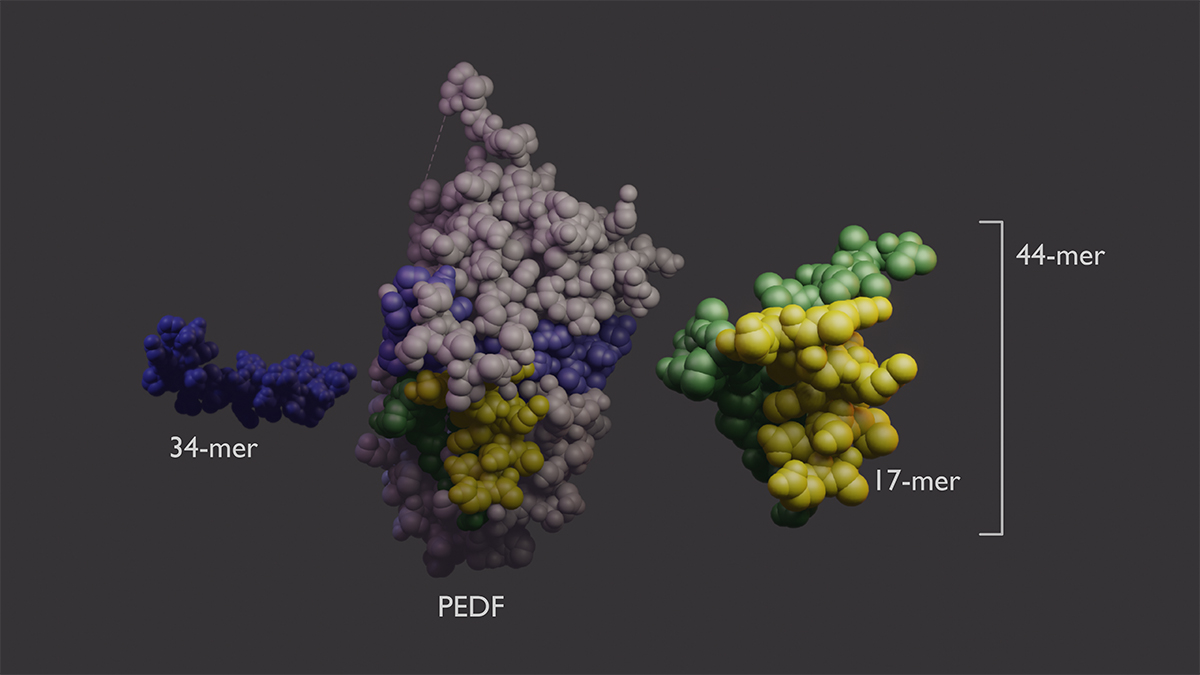
The second PEDF domain, called the 44-mer, provides anti-death signals to retinal neurons.
Michelis and colleagues tested whether the 44-mer could protect immature retinal cells in a dish.Without the presence of proteins and other cells in their usual retinal environment, immature photoreceptors quickly die but can be preserved with PEDF.
They found that both the 44-mer and 17-mer were as capable of saving these photoreceptors as full-length PEDF.Via neurites, amacrine neurons form connections, called synapses, to the cells that forward these visual signals to the brain.
Becerra and colleagues found that PEDF stimulates amacrine cells to develop neurites in their cell culture model and that the 44-mer and 17-mer were at least as effective - or better - at stimulating these connections than the native protein.
Further, the 44-mer and 17-mer peptides work by binding to a protein receptor (PEDF-R) on the surface of neurons.We think PEDF signaling might be a key component of regulating omega-3 fatty acids like DHA, both during eye development and in maintaining the eye’s health over time,†said Becerra
About the National Institutes of Health (NIH):“Pigment Epithelium-derived Factor (PEDF) and Derived Peptides Promote Survival and Differentiation of Photoreceptors and Induce Neurite-outgrowth in Amacrine Neurons.†Journal of Neurochemistry
National Institutes of Health, 9000 Rockville Pike, Bethesda, Maryland 20892